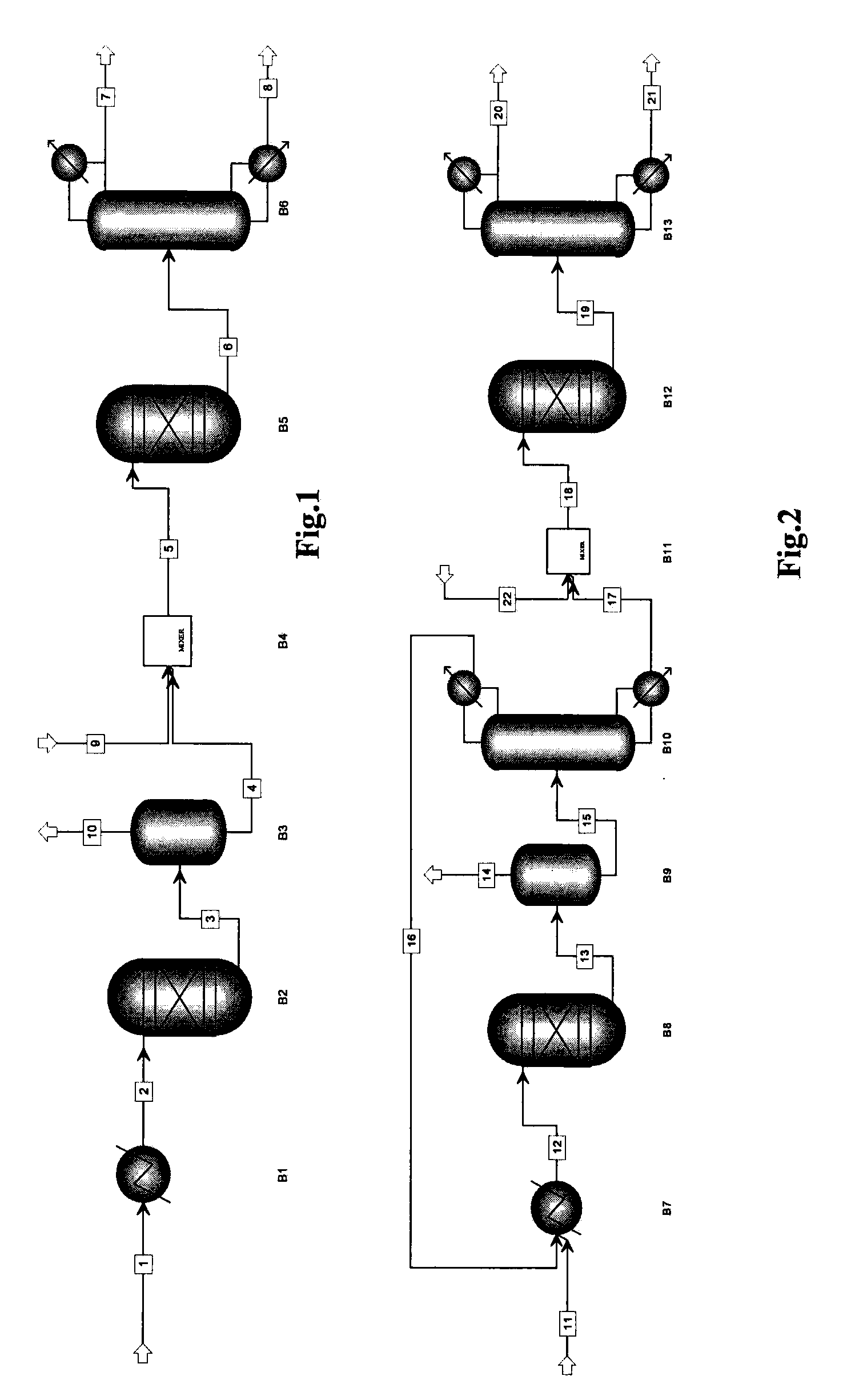Process for producing olefins
a technology of olefins and process steps, applied in the field of process for producing olefins, can solve the problems of increasing the amount of dilution steam, reducing the cracking reaction temperature to some extent, and reducing the activity or deactivation of catalysts, so as to reduce the use of high temperature equipment, reduce investment and maintenance costs, and save energy
- Summary
- Abstract
- Description
- Claims
- Application Information
AI Technical Summary
Benefits of technology
Problems solved by technology
Method used
Image
Examples
example 1
The Process of the Present Invention
[0067]Turning to FIG. 1, the above light naphtha feedstock (C5-C10) (1) after desulfurization and dearsenization was pre-heated by a heater (B1) to a temperature of 475, 520 and 580° C.;subsequently, the pre-heated stream (2)was fed into a dehydrogenation reactor (B2) to contact at a pressure of 0.15 MPa (G) with a fixed bed of Pt—Sn catalyst loaded on alumina carrier to perform a catalytic dehydrogenation reaction so as to obtain a mixture stream (3) containing hydrogen gas, unreacted alkanes and olefins with the same carbon number of the reaction feedstock; the stream (3) was introduced into a heat exchange separator (B3) to cool the stream to 100° C. so as to separate out hydrogen gas and a lower carbon number (4) stream (10) from a liquid-phase stream (4) of the unreacted alkanes and the olefins having the same carbon number of the reaction feedstock; the stream (4) was mixed with an overheated diluting steam (9)in a mixer (B4) and heated to 5...
example 2
Process of the Present Invention
[0076]Turning now to FIG. 2, the above light naphtha feedstock (11 ) after desulfurization and dearsenization was pre-heated by a heat exchanger (B7) to a temperature of 550° C.; subsequently, the pre-heated stream (12) was fed into a dehydrogenation reactor (B8) to contact at a pressure of 0.15 MPa with a fixed bed of Pt—Sn catalyst loaded on alumina carrier to perform a catalytic dehydrogenation reaction so as to obtain a mixture stream (13) containing hydrogen gas, unreacted alkanes and olefins with the same carbon number of the reaction feedstock; the stream (13) was introduced into a heat exchange separator (B9) to cool the stream to 100° C. so as to perform a gas-liquid separation, in which a gas-phase stream (14) was used as a fuel for heating, a liquid stream (15) was fed into a separation column (B10) packed with 5 Å molecular sieves to separate and obtain a stream (16) containing normal alkanes which was fed back and used together with the s...
PUM
| Property | Measurement | Unit |
|---|---|---|
| temperature | aaaaa | aaaaa |
| pressure | aaaaa | aaaaa |
| temperature | aaaaa | aaaaa |
Abstract
Description
Claims
Application Information
 Login to View More
Login to View More - R&D
- Intellectual Property
- Life Sciences
- Materials
- Tech Scout
- Unparalleled Data Quality
- Higher Quality Content
- 60% Fewer Hallucinations
Browse by: Latest US Patents, China's latest patents, Technical Efficacy Thesaurus, Application Domain, Technology Topic, Popular Technical Reports.
© 2025 PatSnap. All rights reserved.Legal|Privacy policy|Modern Slavery Act Transparency Statement|Sitemap|About US| Contact US: help@patsnap.com


